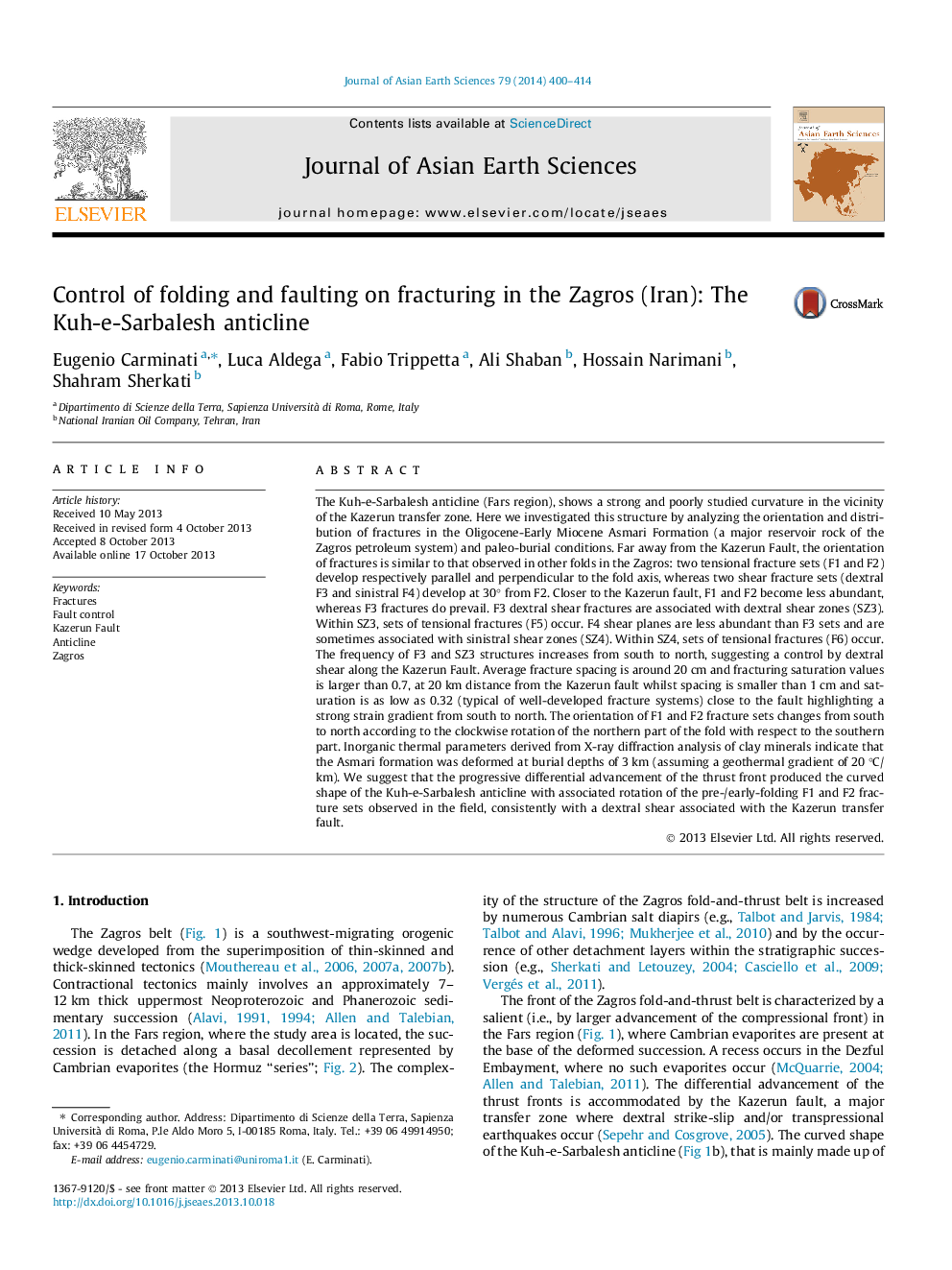| کد مقاله | کد نشریه | سال انتشار | مقاله انگلیسی | نسخه تمام متن |
|---|---|---|---|---|
| 4730916 | 1356785 | 2014 | 15 صفحه PDF | دانلود رایگان |
• Fracturing is studied in the curved Kuh-e-Sarbalesh anticline.
• Fracture intensity is controlled by faulting.
• Fracture orientation and nature is controlled by fold curvature.
• The progressive fold curvature is due to the activity of the Kazerun transfer fault.
The Kuh-e-Sarbalesh anticline (Fars region), shows a strong and poorly studied curvature in the vicinity of the Kazerun transfer zone. Here we investigated this structure by analyzing the orientation and distribution of fractures in the Oligocene-Early Miocene Asmari Formation (a major reservoir rock of the Zagros petroleum system) and paleo-burial conditions. Far away from the Kazerun Fault, the orientation of fractures is similar to that observed in other folds in the Zagros: two tensional fracture sets (F1 and F2) develop respectively parallel and perpendicular to the fold axis, whereas two shear fracture sets (dextral F3 and sinistral F4) develop at 30° from F2. Closer to the Kazerun fault, F1 and F2 become less abundant, whereas F3 fractures do prevail. F3 dextral shear fractures are associated with dextral shear zones (SZ3). Within SZ3, sets of tensional fractures (F5) occur. F4 shear planes are less abundant than F3 sets and are sometimes associated with sinistral shear zones (SZ4). Within SZ4, sets of tensional fractures (F6) occur. The frequency of F3 and SZ3 structures increases from south to north, suggesting a control by dextral shear along the Kazerun Fault. Average fracture spacing is around 20 cm and fracturing saturation values is larger than 0.7, at 20 km distance from the Kazerun fault whilst spacing is smaller than 1 cm and saturation is as low as 0.32 (typical of well-developed fracture systems) close to the fault highlighting a strong strain gradient from south to north. The orientation of F1 and F2 fracture sets changes from south to north according to the clockwise rotation of the northern part of the fold with respect to the southern part. Inorganic thermal parameters derived from X-ray diffraction analysis of clay minerals indicate that the Asmari formation was deformed at burial depths of 3 km (assuming a geothermal gradient of 20 °C/km). We suggest that the progressive differential advancement of the thrust front produced the curved shape of the Kuh-e-Sarbalesh anticline with associated rotation of the pre-/early-folding F1 and F2 fracture sets observed in the field, consistently with a dextral shear associated with the Kazerun transfer fault.
Figure optionsDownload as PowerPoint slide
Journal: Journal of Asian Earth Sciences - Volume 79, Part A, 5 January 2014, Pages 400–414
